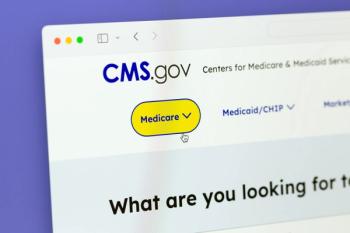
Racial, Health Disparities Exist Across Pharmaceutical Utilization, Study Shows
A recent study found major racial disparities in U.S. prescription drug use, with White patients using the most and Black patients often undertreated.
Retail drug prescription usage varies across racial groups, payers, and health conditions, according to the results of a study
A team of researchers, including corresponding author Maitreyi Sahu, Ph.D., from the Department of Health Metrics Sciences at the University of Washington, studied pharmaceutical usage and spending rates across racial and ethnic groups, including Asian or Pacific Islander, Black, Hispanic and White patients.
Sahu and her team used data from the U.S. Disease Expenditure (DEX) project to compare prescription drug trends in the United States by race, ethnicity, health condition, payer and state. The DEX project produced estimates of U.S. healthcare spending and utilization from 2010 to 2019 for 52 health conditions at the national, state and county levels, using 27.3 billion public and commercial claims.
Per capita estimates were made using racial and ethnic population data from the U.S. Census Bureau and National Center for Health Statistics bridged-race population estimates.
Overall, White populations had the highest pharmaceutical utilization, insurance spending, and out-of-pocket spending when compared with other races.
The lowest per capita pharmaceutical use was seen among Asian or Pacific Islander and Hispanic populations.
Black patients had consistently lower prescription drug utilization rates relative to disease prevalence when compared with other racial groups.
When the data was separated by payer, further disparities emerged. For example, across private insurance, Medicaid and Medicare, White patients averaged 11 prescriptions filled, Hispanic patients averaged 8, Black patients 9, and Asian or Pacific Islander patients averaged 7.
The four health conditions with the greatest pharmaceutical spending were type 2 diabetes, HIV/AIDS, multiple sclerosis and atrial fibrillation.
For example, when it came to the number of multiple sclerosis prescription fills per capita, Black patients averaged less than 0.006, compared with fills per prevalent case, which was approximately 5.
For comparison, White patients averaged nearly 0.008 prescription fills per capita, compared with 4 prescription fills per prevalent case.
“Compared with the all-population average, the Black population had higher per capita prescription drug utilization for most health conditions examined but markedly lower prescriptions per prevalent case, suggesting undertreatment relative to disease burden,” Sahu and her team write in the study.
Prescription medications can be tied to the life expectancy increase in the United States. Between 1990 and 2015, they accounted for more than one-third of the overall increase, according to the study. However, persistent inequities in prescription access and utilization mean that not everyone is benefiting. Data shows that in 2019, Black and American Indian or Alaska Native individuals had a life expectancy approximately
Sahu and her team are advocating for interventions to address these disparities, particularly by improving medication access and utilization.
“The present findings highlight the need for tailored interventions to address racial and ethnic disparities in medication access and utilization,” Sahu and her team write. “At the state level, prior studies have shown that Medicaid expansion demonstrated success in improving access, yet its incomplete adoption across the US limits its potential impact. Federal programs should aim to ensure equitable medication access while accommodating regional differences.”
Newsletter
Get the latest industry news, event updates, and more from Managed healthcare Executive.





















































